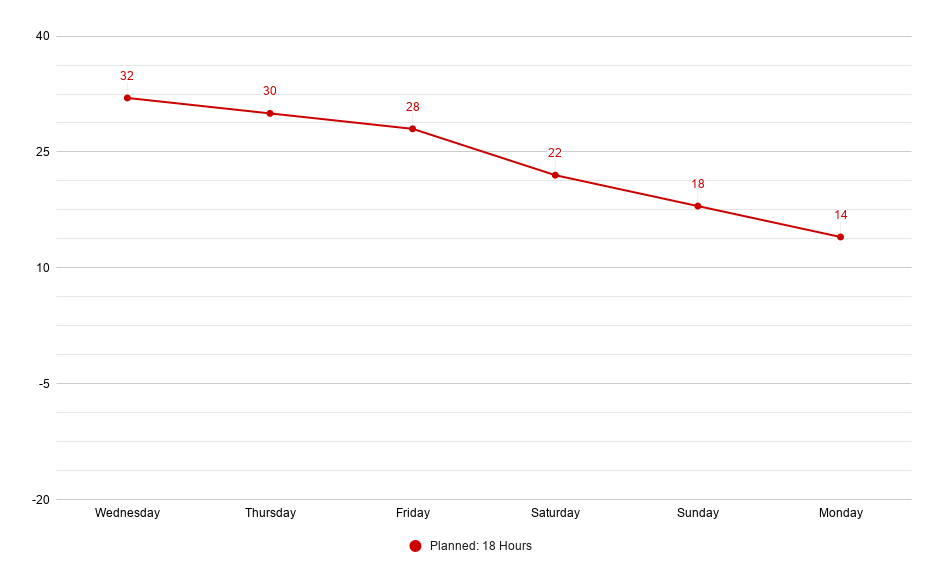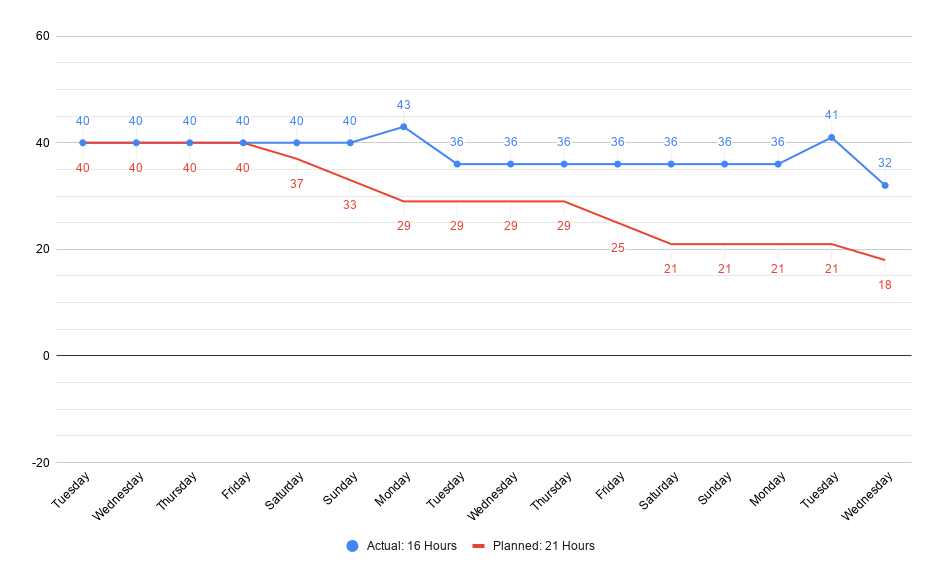
As the chart above shows, this week I worked for less hours than planned but achieved significantly less progress than intended. This lack of progress is due to unforeseen issues with making API calls in C++, and the amount of time spent tackling the bug of screenshots not displaying.
The images below show the final state of the project at the end of these two weeks: all proposed user interface elements have been successfully implemented, and a new solution for managing the API calls has been designed.

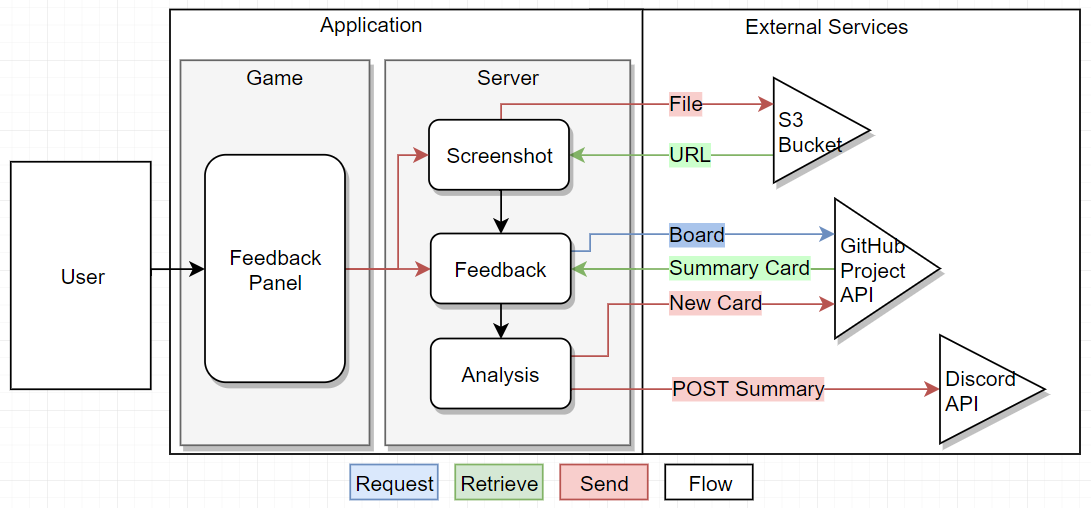
Sentiment Radio-Buttons
Radio Buttons proved to be more complex than I had originally anticipated, as they are not a default UI feature within the Unreal Engine. So instead, I constructed my own radio-buttons using check boxes and a surprising amount of blueprinting. The final implementation below will report the user's sentiment in a range of -2 to 2, as depicted by emotive faces in the mock-up.
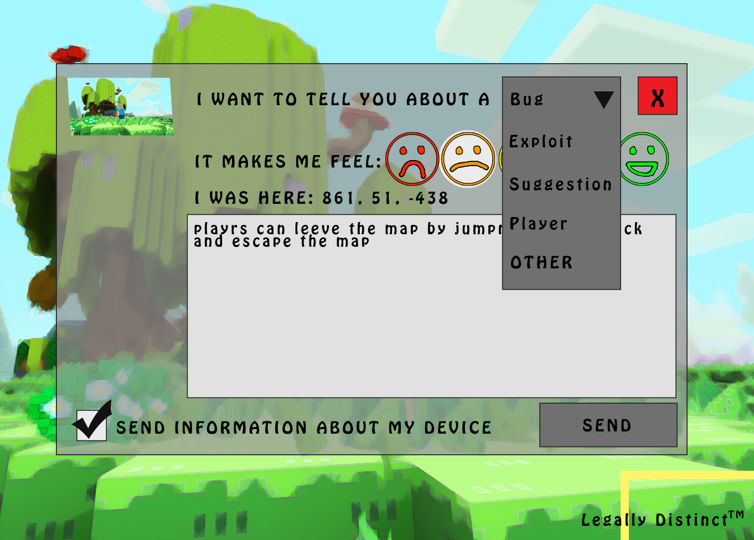
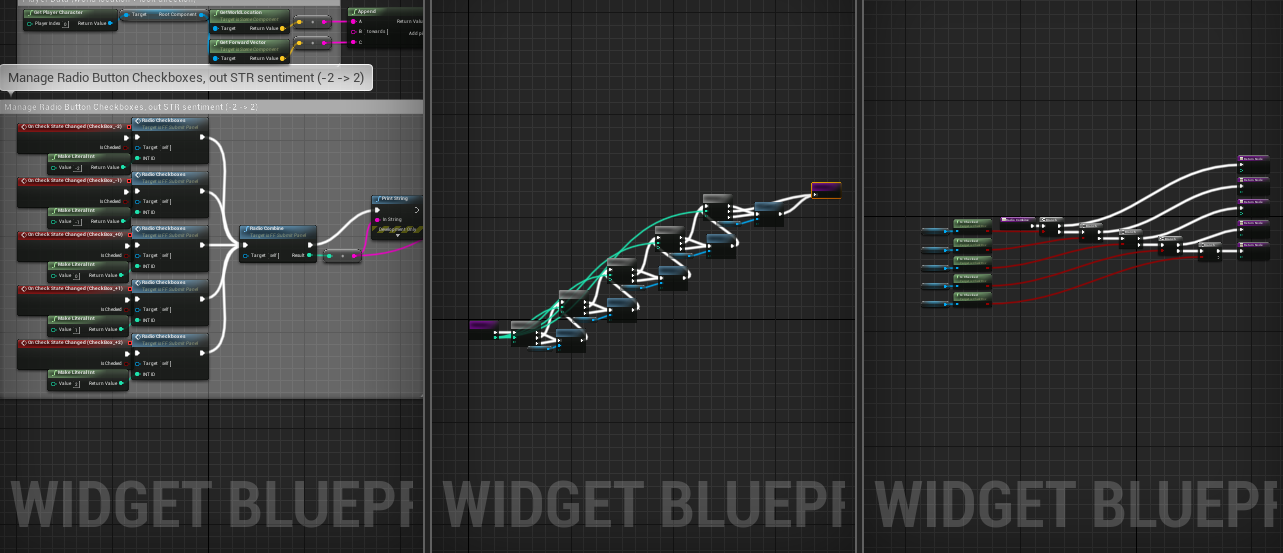

Getting the Screenshot Working
This was to be the first of two unfortunate hurdles: the screenshot wasn't appearing on the UI but was demonstrably updating correctly on the debugging block in the level. I spent a significant amount of time scouring the internet for answers and experimenting with different variations on the blueprints, before finally arriving at the solution.
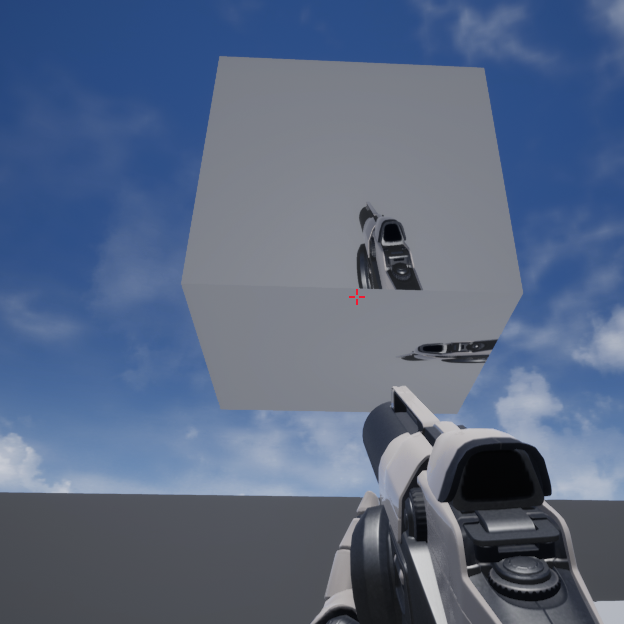
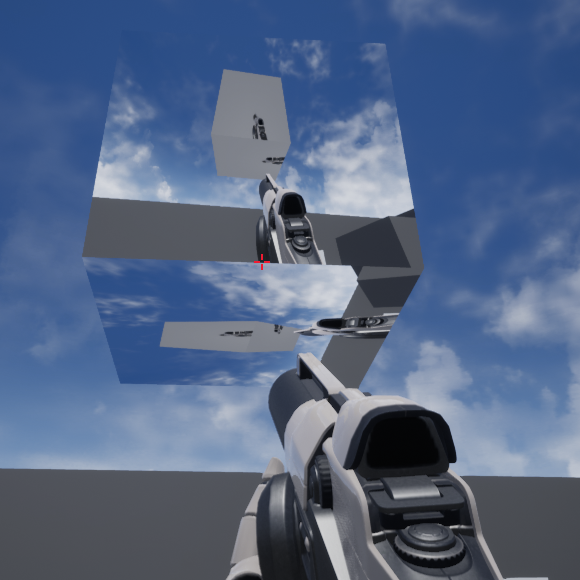
The solution was something that I had experimented with as part of the problem solving process, but hadn't seen due to inexperience with the Unreal Engine: the UI can't render a render texture, but it can render a UI material. With that revelation, it became clear that the rest of my blueprint was working!
C++ and PC Info
The last element of my proposed UI design was retrieving and optionally sending some PC info to help developers. To do this, I started down the path of learning C++ to write my own blueprint functions.
Thankfully, C++ has some built-in functions for retrieving PC details, so my first foray into C++ was mostly learning from examples.
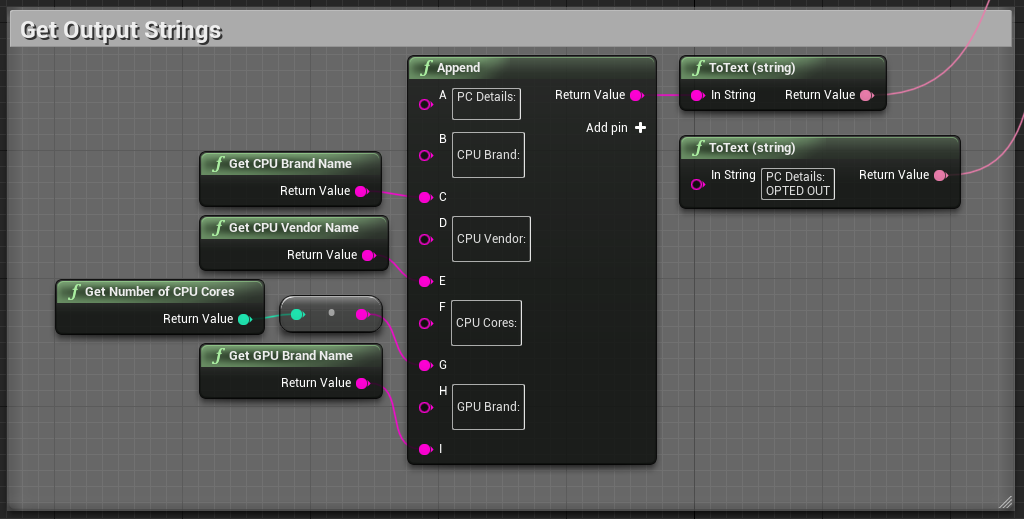
Thus, as seen below, my proposed UI was all implemented and functioning as intended.

C++ and API Research
The last part of my week was to explore my chosen API's and begin creating API calls in C++ to be executed from inside the game. This quickly ground to a halt as it became clear that making these API calls wouldn't take the form that I was familiar with. In other projects I have primarily used URL based calls, like those of the YouTube API. The GitHub and Imgur APIs are both written primarily for use with CURL which I am not familiar with using in code.
So, I turned to finding a C++ library which could be used to make these calls more easily. While looking for GitHub libraries I discovered that there were many language options, but there was not a library for C++. Instead, I began to look for a CURL library for C++ and found curlPP which seemed to be what I needed.
I downloaded and attempted to install curlPP by bringing it's code into the source files of my Unreal project, and found that the Unreal Engine didn't recognise them. After some searching online, I found a fewanswerposts detailing ways to include libraries into Unreal projects. While following these instructions, I found myself continually hitting build errors in the project. I attempted to separately build the curlPP files to include them, on the recommendation of a different answer post, to no avail.
Finally, I attempted to find examples of creating HTTP header requests from the ground up in C++. Many of these examples suggested using a library first, but I found some which had example code written with only the standard C++ libraries. While attempting to implement some of their code I found that I continued to run into build errors, leading to the realisation that writing this all in C++ manually would be time-inefficient and continue to hold back development.
Redesign: Server
After discussing the C++ issues with a friend, I came to the conclusion that a slight rework of my original idea would cut down on the problems I was facing and speed up development. Originally, it was intended for the game to GET and POST to the different API's directly to cut-down on developer setup time.
The approach I now intend to take is to create a back-end web-server written in JavaScript which will handle the various API calls, and cut down the number of calls made directly from the game client. This change means that instead of making six or more unique API calls in C++, I will only be writing two: one to post feedback information to the server, and one to post the image to the server.
I believe that this redesign will reduce the remaining time on the API calls by approximately three hours due to my familiarity with JavaScript and the availability of API libraries.

The above diagram demonstrates the intended flow of the tool from the user through the game and server to the various APIs. The game will send the feedback and the screenshot to the server, where the screenshot will be saved in an Amazon S3 Bucket for later reference. This screenshot’s URL will then be retrieved and passed to the feedback section.
While the screenshot uploads, the server will simultaneously request a project board of the submitted feedback type and retrieve a summary card from that board. The player's feedback will then be posted as a new card to that board with the screenshot URL, and the summary card will be updated to include the new feedback.
Finally, the server will perform some analysis on the feedback data to find hot-spots in levels where players have been sending reports most and the average sentiment of reports in that area. The server will then post that analysis with the summary information to a discord server of the developer's choosing at regular intervals.
This rework has a few benefits. Firstly, many APIs have official or third-party libraries for making use of the API significantly simpler. This will speed up development by cutting down the amount of work required to implement and test each call. Secondly, this removes the security risk of publishing work with API keys to the public as the remote server will have these keys instead. Finally, this reduces processing and networking load done in the game client. Originally, it was intended to perform some analysis and generate summaries from within the game client before posting, where now the server will bear this load.
For Next Week
I believe that this redesign will reduce the remaining time on the API calls by approximately three hours due to my familiarity with JavaScript and the availability of API libraries.
